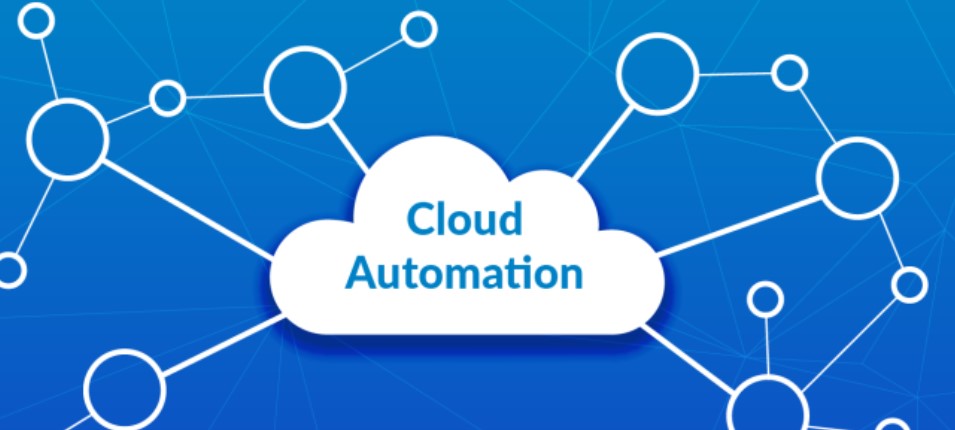As organizations make the move to cloud, they are dealing with a number of issues, including error-prone manual workloads for central IT, slow ticketing systems, slow manual workflows for developers, lack of consistent policy enforcements, and unsalable infrastructure.
Provisioning infrastructure across multiple clouds increases fault tolerance, allowing for more graceful recovery from cloud provider outages. However, multi-cloud deployments add complexity because each provider has its own interfaces, tools, and workflows. Terraform lets you use the same workflow to manage multiple providers and handle cross-cloud dependencies. This simplifies management and orchestration for large-scale, multi-cloud infrastructures.
Cloud Automation: Challenges, Strategy and Approach
To meet the changing IT infrastructure landscape, emerging new services and scaling cloud operations, the automated management of cloud resources & processes holds high significance among IT teams.
Automation in the cloud environment has come a long way from just being a trend to becoming key in the successful cloud journey for migration and continuous optimization.
The idea behind cloud automation is to leverage technology tools and resources to reduce manual burden in provisioning, managing cloud computing workloads and automated IT workflows.
Cloud Automation Strategies
In general, cloud automation use-cases refer to using dynamic abilities of cloud management tools or of a cloud solution to perform functions with less manual intervention.
For instance,
- Adding new instances part of an auto-scaling scenario with auto scaling groups
- Auto provisioning servers to meet scaling requirements
- Identifying and stopping unused instances
- Taking data backups on pre-set intervals
There are also other specific use cases for cloud automation, which include:
Visibility - foundational to cloud automation
What you can monitor you cannot automate. The first thing you will need is having visibility across the entire portfolio of your entire cloud environment. Usually, the discovery capabilities of a cloud management platform will give you an inventory of all the resources available on the cloud under a single pane of glass.
Plan a robust cloud cost monitoring and optimization strategy
As we mentioned previously, cloud spending is another area where automation can help. Cloud sprawl is a common challenge for companies that prolifically use the cloud in their business. Compute instance cost can spiral out of control and automation can make a very big difference here as well. The pay for use model means that you need to keep close track of the costs across your cloud environment.
Cloud Security Compliance & Violations
Get a complete visibility of your data flows and movements, highlighting them to continuously identify security and compliance issues before they become costly. Continuously map and differentiate between actual and potential flows, to see every drift, security and compliance risk.
Infrastructure as Code
- This is the most common use case for cloud automation. Here, cloud automation tools and processes use resource pools to define configurations items such as VMs, containers and virtual networks. Required application components and services re added to these configuration items, which are further assembled to form a complete operational environment for deploying workloads.
Workload Management
- Considered as a crucial part of the workload lifecycle management, cloud automation helps admins remove unused and unwanted long-term entities and their configuration items. It helps a lot in workload management by facilitating ways for automatic scaling tasks such as addition of more resources or removal of excess or unwanted instances.
App Development
- Continuous delivery and continuous integration are key to the success of agile development driven by DevOps culture. The success here relies on the speed of resource deployment and scalability in testing software releases. While public clouds are already capable of doing so, private cloud are not that successful. Cloud automation tools can be the savior in adding such capabilities to any of the cloud variants.
Hybrid Cloud
- In a hybrid cloud environment, cloud automation automates tasks related to a private cloud environment and also enables integration with public cloud platforms such as Azure, GCP and AWS.
Automated workflow
- Workflows should be automated whenever possible for numerous reasons, including to achieve faster operations and to increase the efficiency and accuracy of automated tasks. Workflow automation is important for other reasons as well, including the following: High-value tasks, savings, visibility, communication, service SLA.
With a holistic view on the importance of cloud automation, FPT CloudSuite consider the following aspects to leverage cloud automation:
- Invest in the right tools to succeed
- Cloud visibility for workload, cost and security management
- Centralized tag compliance
- Develop automated deployment platform based on IAC for multicloud
- Embed IAC engine as AWS Cloud Formation, Azure Resource Manager, Terraform enabling both public & private cloud platform
- Event driven to automate remediation, security responses, troubleshoot, deployments and more. Automate and delegate business and IT processes.
CloudSuite’s Approach in Addressing Cloud Automation
| Tool Name | Description | |
| CloudSuite One - Resource | Workload management & visibility | |
| Cloud Expense | Centralized tag compliance | |
| Cloud Expense | Cost management & optimization & visibility | |
| Cloud Safe | Security compliance & visibility | |
| Cloud Ops - Service Catalog | Automated deployment across multiple cloud vendors (AWS, Azure, GCP, VMware) | |
| Cloud Ops - Resource Control | Manual & schedule start / stop / reboot virtual machine | |
| Cloud Alert | Automate and delegate business and IT processes. |

